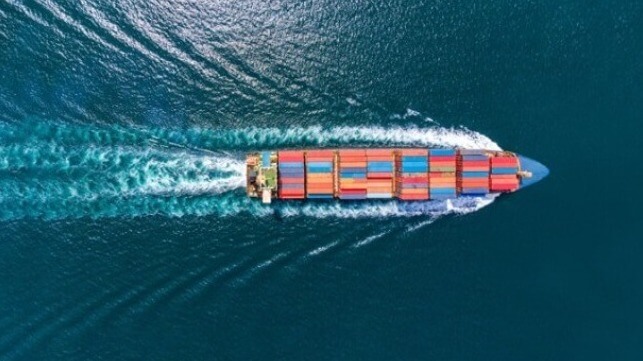Port Congestion Continues to Impact Liner Operations

Port and terminal congestion is continuing to impact the operations of the major container carriers into 2022. While there are signs of improvements, data from research and analysis firm Sea-Intelligence continues to show persistent scheduled delays with as many as one-in-ten container ships unavailable due to supply chain delays.
“Congestion indicators are showing signs of improvement,” said Alan Murphy, CEO of Sea-Intelligence, while noting “the congestion situation is still far from normal.” His firm tracks schedule reliability across 34 different trade lanes and more than 60 carriers plus they have developed a terminal congestion index by using the bi-weekly customer advisories from HMM.
Sea-Intelligence’s analysts report that their terminal congestion index for North America has been gradually increasing since reaching an apex of a little over 80 percent in January 2022, but remains at a highly elevated level. The improvement in North America is also appearing in Europe where Sea-Intelligence reports “substantial improvement in the overall congestion index over the past month.” They highlighted improvements in Spain, Italy, and Greece, but reported that among the busiest container ports, Rotterdam and Hamburg, there is not much improvement.
Demonstrating this improvement, the Marine Exchange of Southern California is now reporting that the anchorage off the San Pedro ports complex is entirely empty and no containerships are waiting at sea near the ports. A total of 28 containerships have reserved slots for Los Angeles and Long Beach and are currently slow steaming toward the ports. That represents less than a third, or a decline of 81 containerships versus the peak of the backlog early in January 2022.
Despite the signs of progress, Sea-Intelligence calculates that 10.5 percent of the global fleet is still unavailable due to supply chain delays, down from 13.8 percent in January. “This means that 3.3 percent of the global fleet has been released back into operation from January to April,” explains Murphy. He notes that the loss of capacity is the most important factor in the ongoing crisis while saying that capacity absorption has acted as a leading indicator for rate developments.
Delays at the ports around the world are continuing to hold schedule reliability in a narrow range far below the historic level. During the first four months of 2022, a period that usually experiences lower volumes before the peak season returns at mid-year, schedule reliability has remained at around a third of vessels. Even the best performing carriers, Maersk and Hamburg Sud, are reporting just over 40 percent schedule relatability.
“Global schedule reliability seems to continue to follow the trend seen in 2021, with schedule reliability within a small range but at a slightly lower base,” says Murphy. “This means that the 2022 score has been slightly below the 2021 level in each of the first four months.” At the beginning of 2022, Sea-Intelligence highlighted that they had seen the first improvement in two years for schedule reliability, but it declined in April 2022 by nearly one and a half percentage points.

that matters most
Get the latest maritime news delivered to your inbox daily.
The average delay for late vessel arrivals however showed signs of improvement in the global supply chain. Murphy notes that the delay decreased once again, this time by 1.04 days to 6.41 days in April 2022. “This is the first time that the delay figure has dropped below the 7-day mark since August 2021,” he highlights. “That said, it continues to be the highest across each month when compared historically.”
Shippers have recently expressed their concerns both as Shanghai increases its throughput after two months of lockdown and as shippers brought forward the timing on shipments typically scheduled for the summer and early fall for the peak retailing seasons. In the U.S., the Journal of Commerce reports the West Coast longshore labor negotiations resumed on June 1 after a 10-day pause with the sides still far apart on the key issues, including automation. The contract expires at the end of this month raising concerns about further disruptions at the U.S. Pacific Coast ports.
